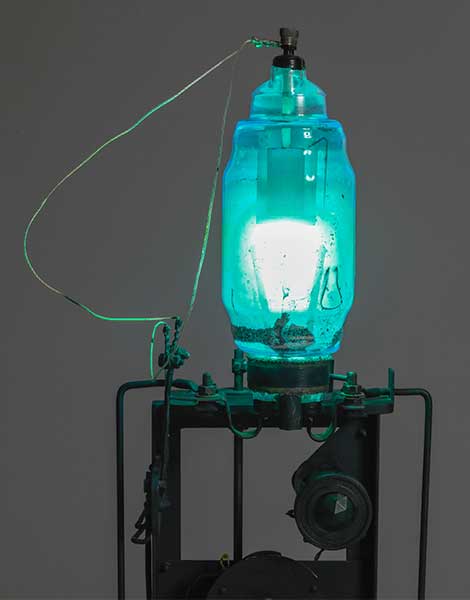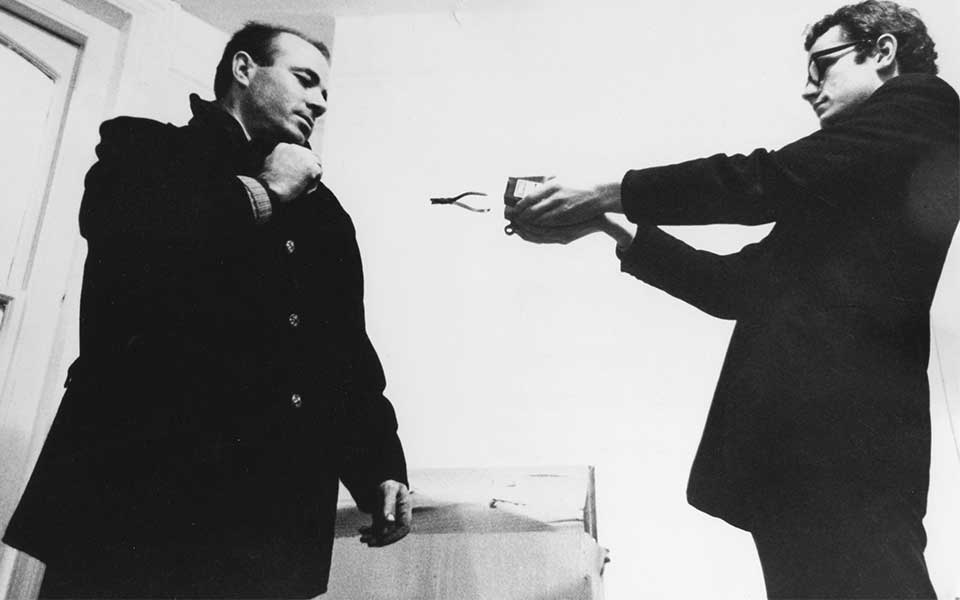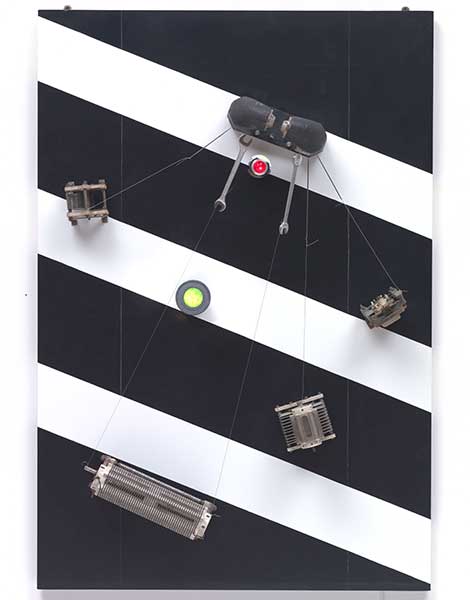“Children and adults often find it magical the way Takis makes metal objects float in midair using magnetism – I know I do too,” admits Michael Wellen, curator of international art at the Tate Modern in London, which will be hosting an exhibition on the internationally acclaimed Greek artist.
Born Panayiotis Vassilakis on October 29, 1925 in Athens, the nonagenarian artist continues to resonate with the modern art world. The show, opening on July 3, will feature representative works by the sculptor from his explorations of magnetism, light and sound. It will later travel to the Museum of Modern Art in Barcelona and the Museum of Cycladic Art in the Greek capital.
“Takis was one of the most audacious and original artistic voices in Europe in the 1960s, whose ambition was nothing less than reinventing the nature of sculpture,” Wellen told Kathimerini newspaper in an interview ahead of the exhibition’s opening.

© ADAGP, Paris and DACS, London 2019

© ADAGP, Paris and DACS, London 2019
Tell us about the exhibition’s concept and which works you consider most emblematic. Does it include new work produced for this show?
It aims to introduce audiences to a pioneering sculptor who broke the conventions of art by using magnetism, light and sound in his work. It looks at particular themes that give shape to his creative universe: magnetism and metal, light and darkness, sound and silence. My co-curator Guy Brett and Takis have worked together since the 1960s, and the exhibition will have the indelible imprint of their ongoing dialogue.
There will not be new works commissioned for the exhibition. Instead our efforts are to showcase certain historical works that haven’t been seen by the public for decades, such as his “Magnetic Fields” (1970), as well as highlights of recent work, specifically those concerning sound. Visitors can also expect to find key sonic works such as “Musicales.”
What do you find interesting or provoking in Takis’ art and methods?
Takis was one of the most audacious and original artistic voices in Europe in the 1960s, whose ambition was nothing less than reinventing the nature of sculpture. He has often commented that his principle interest was in energies, and to make them visible, rather than form and aesthetics for their own sake.
I remain fascinated with how the artist drew inspiration from the technology and materials around him. His works use radar and radio antennas, electric lights, bent nails and scraps of metal. They take something from everyday life and encourage us to look our surroundings differently.

© Clay Perry, England & Co gallery, London

© ADAGP, Paris and DACS, London 2019

© ADAGP, Paris and DACS, London 2019
I understand Takis’ art is to be viewed alongside Olafur Eliasson’s sculptures and installations. Is there a spectrum of kinetic art between the two?
While the connections are not direct, Takis was part of a generation of experimental artists that paved the way for others like Eliasson. Both create works that seamlessly blend concerns about the environment and natural world with reflections about the human condition. In the autumn, the museum will also have an exhibition of Nam June Paik, another pioneering contemporary of Takis. In fact, those two collaborated in 1979 on a musical duet. I like that at Tate Modern audiences can discover parallels and historical connections like these, some direct and others that are somewhat speculative.
Some of Takis’ work explores the use and production of energy. Do you think his art raises questions of sustainability, energy economy and environmental issues? Is there a social/political angle to his work?
Absolutely. Throughout his lifetime, Takis has been politically active and socially engaged. This sensibility is evident in many of his works. But generally he approached political and social topics more obliquely; such works were not fixed to specific world events, but related to broader concerns about our world and our relations to the environment. I’m particularly interested in the way – in the postwar period – Takis repurposed materials and electronics, often taking parts from war machines and fragments associated with destruction to make sculptures that were playful, mysterious, and emotionally affective.

© ADAGP, Paris and DACS, London 2019
How do you view his work in relation to the hybrid arts of the present and the use of even more complex mediums? Is he something of a history lesson for the younger generation?
In the 1960s, Takis was on the front lines of technological experimentation and what we now tend to consider “interdisciplinary” approaches to art. He sought to break down the conventional borders between fields of study, such as art, science, engineering, poetry, history and music – all in an effort for freer and far-reaching ways of thinking. His contemporaries recognized him for those efforts. And younger generations of artists, I hope, will find much to enjoy and draw inspiration from.
But ultimately I think Takis’ work is relatable, not just for artists, but for people from all walks of life. Children and adults often find it magical the way he makes metal objects float in midair using magnetism – I know I do too. Likewise, the blinking lights of his “Signals” and the all-encompassing sounds of his musical works are best appreciated in person. The works that Takis developed in the 60s and 70s, which, like today, were times of social and political unrest and overwhelming pace of new technology. They carry some of that frenetic energy and elements of uncertainty. But in their experimentation and revolutionary boundary-crossing, they aim to delight.












